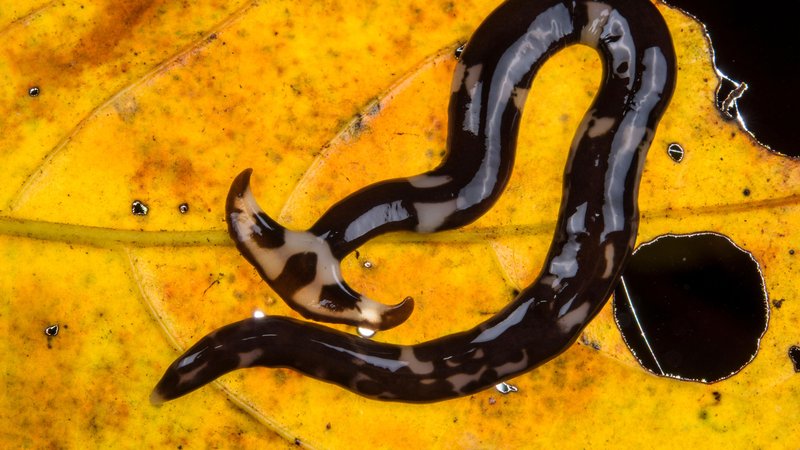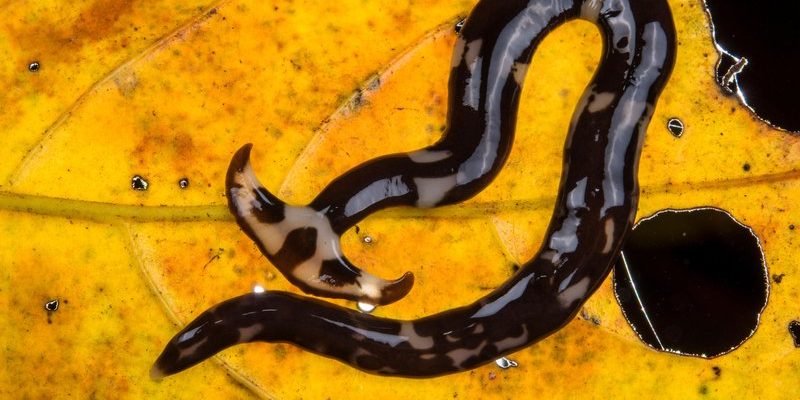
Now, before you start panicking, let’s break this down. Hammerhead worms, known scientifically as *Bipalium kewense*, are long, flat worms with a distinct hammer-like shape at one end. They might seem harmless, but they can munch on your precious earthworms and other beneficial soil critters. So, how can you tell if they’ve moved into your garden? Let’s explore the tell-tale signs together.
Identifying Hammerhead Worms in Your Garden
The first step in managing any pest problem is knowing what you’re dealing with. Hammerhead worms can be tricky to identify for beginners, but once you know what to look for, it becomes easier. These worms usually range from 4 to 12 inches long, featuring a flattened, elongated body that tapers off into that recognizable hammer shape.
When on the prowl, you might find them lurking under leaves or in moist, shady areas of your garden. The color can vary, with shades of brown or gray often speckled with darker stripes. Here’s the thing—if you spot a worm that resembles a flat ribbon with a distinct head, you might very well be looking at a hammerhead worm.
To help you keep your eyes peeled, here are some key traits:
- Body Shape: Flattened and smooth.
- Head Shape: Hammer-like appearance at one end.
- Movement: Slithering, similar to a snake but much flatter.
- Coloration: Brownish or gray with darker stripes or spots.
Unusual Garden Behavior
Another sign of hammerhead worm infestation is a shift in your garden’s usual behavior. You might notice your plants aren’t growing as well as they used to, or you might find fewer earthworms in the soil. Honestly, a healthy garden is teeming with life, and a sudden decline can signal that something’s off—possibly due to these flat invaders.
You might be wondering why the absence of earthworms is a big deal. Well, earthworms are like nature’s tillers—they aerate and enrich the soil. Without them, your plants can struggle to absorb nutrients and water effectively. If your garden feels “off” or you aren’t seeing the usual signs of life, it might be time to check for hammerheads.
Additionally, if you’re noticing an increase in slugs or other pests, it can mean that the hammerhead worms are doing their job—eating the beneficial earthworms that keep the balance in your garden ecosystem. Keep an eye out for these changes, as they can be crucial indicators.
Visible Damage to Soil and Plants
Have you ever dug into your garden soil and felt like something is missing? If you see trails or divots in the soil, it might be due to hammerhead worms. They tend to create burrows as they navigate through the ground, and this can lead to loose, crumbly soil—an odd look for what should be rich, compact earth.
You might also notice signs of plants wilting or looking like they’re struggling to thrive. This isn’t just a coincidence. Hammerhead worms feed on soil-dwelling creatures, and their absence can directly affect your plants. If your flowers or veggies are experiencing sudden stunted growth, that could signal a larger problem tied to these pesky worms.
Here’s how you can look for visible damage:
- Check for Soil Trails: Look for loose soil or unusual burrowing patterns.
- Inspect Plant Health: Wilting or stunted growth can be clues.
- Monitor Soil Life: Noticeably fewer insects or earthworms are vital signals.
Finding Hammerhead Worms After Rain
Rainy days can bring a surprise visitor to your garden—the hammerhead worm loves damp conditions. After a downpour, they’re often seen slithering on the surface of the soil or even crawling onto walkways, driveways, or patios. If the weather has been wet, take a moment to check your garden as these worms might be out for a stroll.
You might see them in the early morning or late evening when the air is cooler, and they’re more likely to come out. This behavior can lead to unexpected encounters, so keep your eyes peeled. If you notice several of these worms in one spot, it could be a clear indication of a larger infestation.
Here’s how to do a quick post-rain check:
- Look for Movement: Observe for slimy trails or live worm sightings.
- Check Pathways: Don’t forget to scan walkways near your garden.
- Assess Moist Areas: Focus on shady spots and any areas with standing water.
Complications from Hammerhead Worms
Now that you’ve identified the signs and behaviors, let’s talk about the complications that can arise from a hammerhead worm infestation. The primary concern is their impact on beneficial soil life. As they feast on earthworms and other helpful organisms, the balance in your soil can shift dramatically.
This disruption can lead to several issues:
- Troubled Soil Health: With fewer earthworms, your soil might become compacted and less fertile.
- Reduced Plant Growth: Struggling plants can lead to a less productive garden.
- Attraction of Other Pests: Sometimes, a decline in beneficial insects can invite pests that harm your plants.
Dealing with these complications early on can save your garden from turning into a patch of despair. Keeping an eye on the signs of hammerhead worms is key, and addressing any infestations promptly is crucial.
What to Do About Hammerhead Worms
If you’re now thinking, “What can I do if I find hammerhead worms in my garden?”—don’t worry, there are ways to tackle this issue. The first step is to physically remove them. You can gently pick them up with gloves and place them in a sealed container. Alternatively, you can drown them in soapy water, which is an effective way to handle these pests.
In addition, consider enhancing your garden’s ecosystem. Encouraging the growth of beneficial insects like ladybugs or predatory nematodes can help control hammerhead populations naturally. Strategies include:
- Soil Enrichment: Adding compost can attract earthworms back to your garden.
- Mulching: A thick layer of mulch can deter pests while feeding the soil.
- Regular Monitoring: Consistently check your plants and soil to catch any signs of trouble early.
Let me explain—while hammerhead worms can be problematic, proactive measures can help you maintain a healthy garden.
Preventing Future Infestations
Once you’ve tackled a hammerhead worm issue, the last thing you want is for them to come back. Prevention is key! Start by ensuring your garden retains a healthy balance of earthworms and other beneficial insects. This means creating an environment where they can thrive.
Here are some helpful tips:
- Avoid Chemical Pesticides: These can harm beneficial organisms.
- Keep Your Garden Litter-Free: Remove debris that might house pests.
- Rotate Your Crops: This can make it harder for pests to establish a home.
Staying vigilant and nurturing your garden can significantly reduce the chances of another hammerhead worm infestation.
In conclusion, spotting signs of hammerhead worms early can save your garden from future headaches. By being aware of their characteristics, behaviors, and the effects they have on your plants, you can take action. Remember, maintaining a healthy ecosystem in your garden is the best defense against these slithering invaders. Keep your plants happy, your soil enriched, and enjoy the beauty of your thriving green space!

